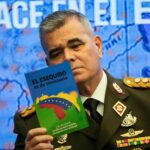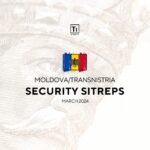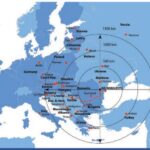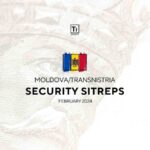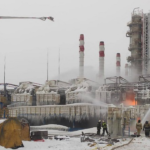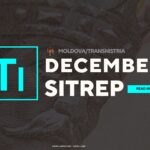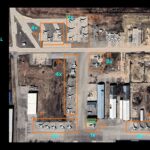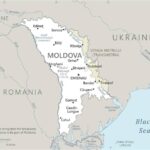The Turkish military intervention to clear Afrin has stagnated in the past weeks. Spearheaded by Syrian Rebels, operation Olive Branch failed to capture more than a few pockets of lands on the borderlands. While the Kurdish defenses played a role, the key input in this deceleration can only be found in Idlib province. Russia and the Loyalists were the ones that greenlighted operation Olive Branch after striking a deal with Turkey. But they are also the ones to sabotage it. In response, Ankara is enhancing pressure in the Rebel fronts of Idlib complicating the Regime’s advances. The following analysis will detail why Turkey intervened in Afrin, how the operation was planned behind-the-scenes, and how did it came to near failure.

Crowdsourced by Wikipedia’s thread.
THE FEDERATION OF NORTHERN SYRIA OR THE KURDISH ROJAVA?
The Afrin canton is a patch of mostly rural hilly lands rich with olive trees, located in north-western Aleppo governorate. This has been the most tranquil sector in Syria throughout the eight-year old civil war. It came under the control of the Kurdish militia YPG and its political wing, the PYD – Democratic Union Party – that provided self-governance in the area following the erosion of Bashar al-Assad’s control over various peripheral provinces of the country in the opening stages of the war. Throughout the fight against ISIS, the U.S-led Coalition enlisted the help of the YPG and several Arab Sunni, Syriac and Turkmen militias to form a multi-ethnic alliance under the direct support and aid of the Department of Defense. The alliance, called Syrian Democratic Forces (SDF) was a sequel to the joint Kurdish-Arab Euphrates Volcano war room that inflicted a turning-point defeat to ISIS in Kobani (2014). Under close U.S. air support and tactical guidance, they came to liberate nearly the entirety of northern Syria: Raqqa (province and city) and the eastern banks of the mid-Euphrates river valley up until the Iraqi border. This vast territory came under the administration of the 2016-proclaimed Federation of Northern Syria to which the SDF serves as an official army. The federation could as easily be called “Rojava” suggesting the western lands of the Kurds. Throughout this, the administration based in Qamishli (north-eastern Syria) split the territory into four regions subsequently composed by sub-provinces taking after the Kurdish canton system:
- Afrin region: Afrin province (Afrin, Jandaris and Rajo), Shahba region (Tel Rifat and Manbij),
- Euphrates region: Kobani province (Kobani and Sarrin) and Tel Abyad province.
- Jazzira region: Hasakha province (Hasakha, Tell Tamer, Serekaniye and Derbasiyah) and Qamishli province (Qamislhi and Derik).
- The mid-Euphrates river valley has not been yet distributed within an existent region nor has the SDF created one. The cities of Raqqa and Tabqa have been placed under a civil council, while the Deir ez-Zor Military Council (DMC) of the SDF is still conducting anti-ISIS raids in the far east corner – an entirely Arab Sunni territory.

Ankara perceives the Federation of Northern Syria as a Kurdish state that would embolden the decades-long insurgency in southeastern Turkey to manage a breakaway – starting a domino effect in its path to a greater unified Kurdistan. Despite the resemblance with the Kurdistan Regional Government (KRG) from northern Iraq, this entity cannot be controlled or curbed through soft power tools. The Assembly from Qamishlo is dominated by the PYD, and the Kurds outnumber other militiamen, despite US efforts to enlist more Arab fighters. There is no political counter-weight to the YPG/PYD hegemony that Turkey can use to its advantage. As opposed to northern Iraq where Ankara would traditionally ally with the Barzani clan and the KDP to counter PKK or PUK.
The truth is somewhere in the middle. The main Syrian Kurdish groups remain wedded to their vision of a Syria where they gain autonomy, in a form of federalism, that is at odds with Assad’s determination to control all of Syria. And given their far-left ideology they try to mitigate an inclusive policy of uniformity in an attempt to include the diverse ethnic-groups and confessions in northern Syria – which is fairly unrealistic given the reality on the ground. Many reports even indicate that the PYD is suppressing opposition parties or that it even displaced Arab villagers from their homes. While there are instances of harmonious Arab-Kurdish cohabitation within the tribes of Syria’s northeastern provice of Hasakha, exporting that model in others parts – including Arab majority regions – has poor chances of succeeding. And parading with the imprisoned PKK leader’s portrait, Abdullah Ocalan, in the center of Raqqa is not sending a good post-conflict message.
ETNO-TRIBAL POLITICS
Several swats of land controlled by the Federation of Northern Syria are either dominated by Arabs or Turkmen – two ethnicities that Ankara is trying to weaponize against the Kurds. It follows the classical and almost cliché divide et imperia strategy of sectarianism. That is namely the case of Raqqa governorate and the territory from northern Aleppo province already controlled by Turkey and embedded Rebel groups through operation Euphrates Shield. In early 2017, Raqqa province almost followed the same route. Ankara offered Washington the alternative of using Turkish-backed Islamist groups as Ahrar ash-Sham or the Syrian Turkmen Brigades instead of the Kurdish-dominated SDF to capture Raqqa. That offer was rejected by the Trump administration that then proceeded to arm directly the Kurdish elements of the SDF – a premier for the U.S. strategy in Syria. As a result, the self-proclaimed capital of ISIS, Raqqa, was successfully liberated between June and October 2017. Powerless and outmaneuvered, Turkey had to come to terms with the reality on the ground. However, the U.S. guaranteed that the weapons will be retrieved afterwards. That process never occurred as the anti-ISIS operations were later extended down the eastern banks of mid-Euphrates river valley – a process still ongoing.
FORCE PROTECTION
In January 2018, The United States announced plans to further enhance the Syrian Democratic Forces (SDF). The Pentagon attempts to transforme the SDF from an alliance of armed tribesmen and rigid militias to a quasi-professional regular armed force. This plan is vital for security and stability in the liberated territories. It will also serve as a lethal and deterring counter-insurgency “silver bullet” against the displaced, fleeing or hidden jihadists plotting to revive the destroyed “Caliphate”. Presumably, it would also serve the geopolitical role of countering Iranian hegemony developing the region. On the other hand, it suggests that the Kurdish elements will not be de-armed or abandoned by the United States.
TURKEY AND RUSSIA NEGOTIATE AFRIN FOR IDLIB DEAL
Turkey decided to act on the only Kurdish-controlled land that is out of the U.S-led Coalition’s operational interest, protection or reach: the Afrin canton. To achieve this, it had to turn to Russia who provided geopolitical protection for that area. The Kurds (YPG) knew that Afrin was uncovered in face of Turkish hostilities as it lacked U.S. troop presence that would deter them – as they did in Manbij. Inherently, the YPG had to look for another “guarding angel”.
Moscow had a major interest in gaining leverage over Ankara as it was preparing to initiate an offensive against the Turkish-backed Rebels from Idlib. Gaining control of Afrin would draw Ankara back to the negotiations table in that matter. Accordingly, YPG secured the protection of the Russian Federation.
In mid-2017, Moscow deployed military policemen in Afrin to setup an observation outpost flying the Russian flag. That checked Turkey’s move in the region for a while. However, the circumstances on the battlefield changed. The Loyalist camp could not penetrate Idlib province, the largest Rebel-stronghold. Furthermore, the (unofficial) al-Qa’ida franchise there, Hayat Tahrir al-Sham (HTS) had unleashed a major crackdown on other Rebel fronts, further polarizing the Opposition between Islamists and hardline Salafist jihadists. Fighters defected from other militias to join HTS, which emboldened the group to prey on territories controlled by the weakened Rebel groups. As it seized key routes and cities, most of the Syrian Rebels were subdued under HTS’s command. Throughout this quagmire, in November 2017, the Turkish Armed Forces managed to establish a military outpost in Mount Sheikh Barakat, western Aleppo countryside, near Idlib. The province was becoming an impossible nut to crack without Turkish endorsement or cooperation.
A deal was struck: Afrin for Idlib. Russia pulls its soldiers from Afirn, essentially opening the airspace for Turkish jets and operations, if Turkey intervenes to soften the situation in Idlib. Ankara began pulling Rebel fighters from Idlib and positioning them on Turkish borderland with Afrin. Military convoys of the Turkish Armed Forces (TSK) were spotted entering Idlib province. Moscow expected them to put the jihadists from HTS back in line, but instead the Turkish Army took positions on the mountains overlooking Afrin from northern Idlib. It became clear that Turkey was laying a siege on the Kurds.
In sync, the Loyalist camp, namely Russian, Assad’s forces and Iranian-backed Shi’a militias accelerated their offensive in south-western Idlib taking advantage on the lower Rebel numbers there – transferred by Turkey on the Afrin front. A deal is a deal, so Russia also evacuated its soldiers from Afrin essentially OKing Ankara to commence with the offensive.
OPERATION OLIVE BRANCH
On January 20th, The Turkish Air Force (TAF) began pounding villages in the canton and Afrin city. Rebel light infantry units were formed on the Syrian borderlands embedded with entire mechanized units of the Turkish Armed Forces. A bridge was built from Turkey’s Hatay province for military vehicles to cross the Karasu river into Qara Baba, a village in Afrin, Syria. At the end of the day, over 108 sorties were launched by Turkish F-16s. It kicked-off a slow-moving offensive that made headlines more because of the indiscriminately air strikes than ground achievements. On the same date, the Loyalist managed to capture the strategic al-Duhur air base in western Idlib province – a precious victory against the Rebels that was facilitated or at least accelerated by the Turkish operation. Immediately afterwards, the situation started to suspiciously erode for Ankara.
SYRIANS, IRANIANS SABOTAGE TURKISH OFFENSIVE
The next day, the Syrian government publicly condemned the Turkish intervention invoking a sovereignty infringement. Pro-government forces even opened Aleppo for YPG to move militiamen and logistics to Afrin. In exchange, the Kurds will trade grain and oil from areas controlled in northeast Syria (Hasakha and Deir ez-Zor), a source said to Al Jazeera. Secretary of Defense James Mattis said that close to 50% of Kurdish militiamen are now shifting from active front with ISIS to fight-off the Turkish intervention. The international community, including the United States, the European Union, France and Germany condemned the operation in harsh terms.
In Idlib, the situation was also worsening for the Turkish-backed Rebels. The loss of al-Duhur air base was a defeat too great to ignore. Many of the Rebels transferred to Afrin returned to keep the line against Syrian, Russian and Iranian-backed troops.
On February 3rd, the Opposition Forces downed a Russian Su-25 fighter jet in skies of Idlib. The weapon used was a Russian-made Man-portable air-defense (MANPAD), Sa-18 Igla, that the Rebels captured only days ago from the Kurdish YPG in Afrin. This complicated the relationship between Ankara and Moscow. It is reported that Russia consequently re-closed the airspace over Afrin. Turkish government spokesman Bekir Bozdağ denied the claims. But security sources told Cumhuriyet that Turkish warplanes and helicopters had only been patrolling the Turkish side of the Syrian border and not crossing since then. Banned from flying over Afrin, the Turks were also not welcomed in Idlib.
On February 5th, The Syrian Arab Army or allied Iranian-backed paramilitary groups have reportedly started shelling the freshly established positions of Turkish forces in the southern countryside of Aleppo province – according to both opposition and pro-government sources. The Turkish Army arrived there from Idlib to establish observation posts as agreed in the Astana de-escalation accords. It is known that non-Syrian Army pro-government units based opposite the Al-Eis area are mostly Iranian-linked or Iranian (proper) forces. The Turkish Army has apparently responded to the attacks with a rocket artillery salvo against pro-governmental positions near Shugheydilah. Casualties were reported on both sides but the incident was buried under the rug. It appears that Russia is willing to push forward the Syrian regime, or even encourage Iran to take more central stage in dealing with Turkey.
On February 10th, a Turkish T-129 attack chopper was downed by Kurdish anti-aircraft fire originating from Afrin. The helicopter crashed in Turkey’s Hatay province resulting in the death of both pilots. Further, a photo surfaced online showing Kurdish YPG militiamen operating an Iranian-made infantry vehicle armed with an 106mm mounted anti-tank cannon. This suggests that Iranian made weaponry has been transferred to the Kurdish forces in limited amounts. In response, new Turkish military convoys entered Idlib to establish more observation posts near Loyalist-held positions in Aleppo and Hama. This move enforces the Astana de-escalation accord, essentially blocking the Loyalist offensive in the area.
As of February 12, more than 20 Turkish soldiers and 150 YPG fighters have been killed since the military offensive began.
ONGOING RENEGOTIATIONS
Seemingly, Moscow only struck the deal with Turkey to facilitate further gains against the Rebels in Idlib. As soon as victory was achieved in al-Duhur, it began to backpaddle on endorsing Operation Olive Branch. This is not to say that Afrin is safe from further airstrikes or land incursions. The combined forces of Turkish and Syrian Rebels will move forward with the ground operation regardless of the great costs awaiting them. It is already reported that TAF air strikes have restarted.
The Afrin and Idlib provinces are uniquely interconnected in this late stage of the Syrian Civil War. Likewise, the Ankara-Moscow dynamic has proven to be one of the most creative and unlikely relations. It would be no surprise if the parties managed to compromise and outmaneuver each other again.
Founder of T-Intelligence. OSINT analyst & instructor, with experience in defense intelligence (private sector), armed conflicts, and geopolitical flashpoints.

